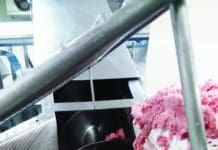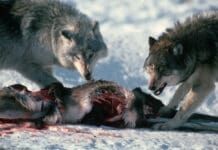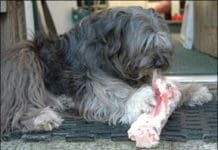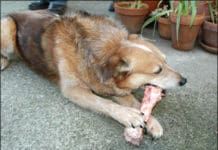Home Search
raw%20dog%20food - search results
If you're not happy with the results, please do another search
How to Freshen Dog Breath
You can freshen dog breath at home, but you must be diligent.
What Foods Are Toxic To Dogs?
There are many foods that are toxic to dogs. Watch what your dog eats, and if you’re not sure and see signs of poisoning, get to a veterinarian immediately or call a poison control center.
Buying a Naturally Reared Puppy
Read any good puppy contracts lately? Probably not. Health and placement guarantees, spay and neuter requirements, limited registration and other legal details are important, but they can (yawn) put you right to sleep. Well, that used to be true, but today some breeders are writing contracts that leave people rubbing their eyes in disbelief because they contradict everything mainstream veterinary medicine recommends. These contracts require puppy buyers to feed an all-raw diet, avoid routine vaccinations, and use holistic therapies instead of conventional veterinary care.
Nature’s Variety Dog Food Review
Nature's Variety was founded on the principle that dogs (and cats) should be given a variety of dietary options, both in terms of ingredients (chicken, beef, lamb, pork, etc.) and in the very form of food they are given (kibble, canned, etc.). While many companies offer a dry and a canned form of their products, Nature's Variety is ahead of the curve in adding frozen raw diets to its offerings. To ensure that consumers were well educated about these unique products and the concept of rotational feeding" very new at the time Nature's Variety products were sold only in independent pet supply stores when they were introduced to the retail market in 2002. Nature's Variety offers two distinctly different lines of food: Instinct and Prairie. True to the promise of "variety" present in the company's name
The Ancestral Dog Food Diet
Dog food as we know it today that is, either crumbly bits of kibble packaged in bags and boxes or gloopy meat-based concoctions sealed into cans was invented in 1860. Think about that for a moment. Our great-grandparents and great-great-grandparents raised dogs completely without the benefit of Purina. Before 1860, no one poured a pile of chow from a bag marked, Dog." Everyone who had a dog knew what dogs ate and how to feed them. "
Homemade Low-Fat Dog Food Diets
Seven-year-old Annie looks terrific now, but she weighed 20 pounds less when first diagnosed with EPI. Annie's owner enjoys cooking for her dogs now that she has learned how to streamline the shopping, preparation, and storage. Keely is an active agility dog. She requires a low-fat diet to prevent ill effects of hyperlipidemia, which is common in Miniature Schnauzers. Rowdy, a 12-year-old Rhodesian Ridgeback, needs a low-fat diet that doesn't trigger painful gas attacks." Rocky is finally a good eater!"
Help Manage Your Dog’s Diabetes Through Proper Diet
There is no single “best” diet for dogs with diabetes. Most diabetic dogs do fine on a diet formulated for adult maintenance. And most do not require a high-fiber prescription diet. However, it is important to maintain consistent carbohydrate levels, and a diet moderately low in fat may be safest. The nutritional needs of any concurrent disease should take precedence.Dogs with diabetes can thrive on diets that are dry or canned, prescription, frozen raw, home-prepared (cooked or raw), and combinations of any of these. See the samples below (starting with “Prescription Diets”) for a variety of diets that have worked well for diabetic dogs and their caregivers. We’ll say it again: There is no single “best” diet for dogs with diabetes. Most diabetic dogs do fine on a diet formulated for adult maintenance. And most do not require a high-fiber prescription diet.
Exocrine Pancreatic Insufficiency in Dogs
Kanis Fitzhugh, a member of the Almost Home organization, knew she had to rescue Pandy, an extremely thin and seemingly vicious four-year-old Dachshund. Pandy had been relinquished to a shelter in Orange County (California), who turned her over to Southern California Dachshund Rescue. Deemed people- and animal-aggressive, Pandy appeared to have been starved, and weighed just 13 pounds. Fitzhugh thought the dog deserved a break, and brought Pandy home in May 2007. During the first couple of weeks in her new home, Pandy managed to pull a chicken down from the counter and proceeded to eat the entire bird, including bones, plastic tray, and grocery bag, in less than the 10 minutes that Fitzhugh was out of the room. Pandy was rushed to the vet and emergency surgery was performed, as the bones had ruptured her stomach lining in three places. Luckily, she survived. Pandy's voracious appetite, large voluminous stools, and aggressive disposition were all caused by a medical condition called exocrine pancreatic insufficiency (EPI). With Fitzhugh's loving care, including enzyme supplements and a change of diet, Pandy stabilized. Within a year, Pandy had transformed into a beautiful, funny, 26-pound Dachshund who gets along great with all the human and animal members in the Fitzhugh household. Exocrine Pancreatic Insufficiency, or EPI, also referred to as Pancreatic Hypoplasia or Pancreatic Acinar Atrophy (PAA), is a disease of maldigestion and malabsorption, which when left untreated eventually leads to starvation. One of the major difficulties with this disease is in the prompt and accurate diagnosis. Astonishingly, visible symptoms may not appear until 80 to 95 percent of the pancreas has atrophied.
A Homemade Dog Food Diet
As more and more owners make the decision to switch their dogs to homemade diets, we grew increasingly aware of the importance and urgency to supply appropriate guidelines that could help people create homemade diets that would meet their dogs' nutritional needs. Over the past five months, we've presented information on homemade diets, cooked and raw, with whole bones, ground bones, or boneless. During that time, we've learned about some new products, read a great new book, tried out some sample pre-mixes and freeze-dried foods, and responded to questions from people about issues raised in our past five articles and points that would benefit from clarification. We'll discuss these topics in this final installment of our series.
Home-Prepared Dog Food
including ground meat
Which Type of Dog Food is Best?
What kind of dog food is best? Is canned food healthier than kibble? Does a homemade dog food diet require as much work as it appears to? Whole Dog Journal developed a very comprehensive pros and cons chart for various dog food options you may be considering. Remember: no one dog food is best for all dogs! Consider your dog's lifestyle and needs and use this chart to help you decide what kind of food your dog should eat.













